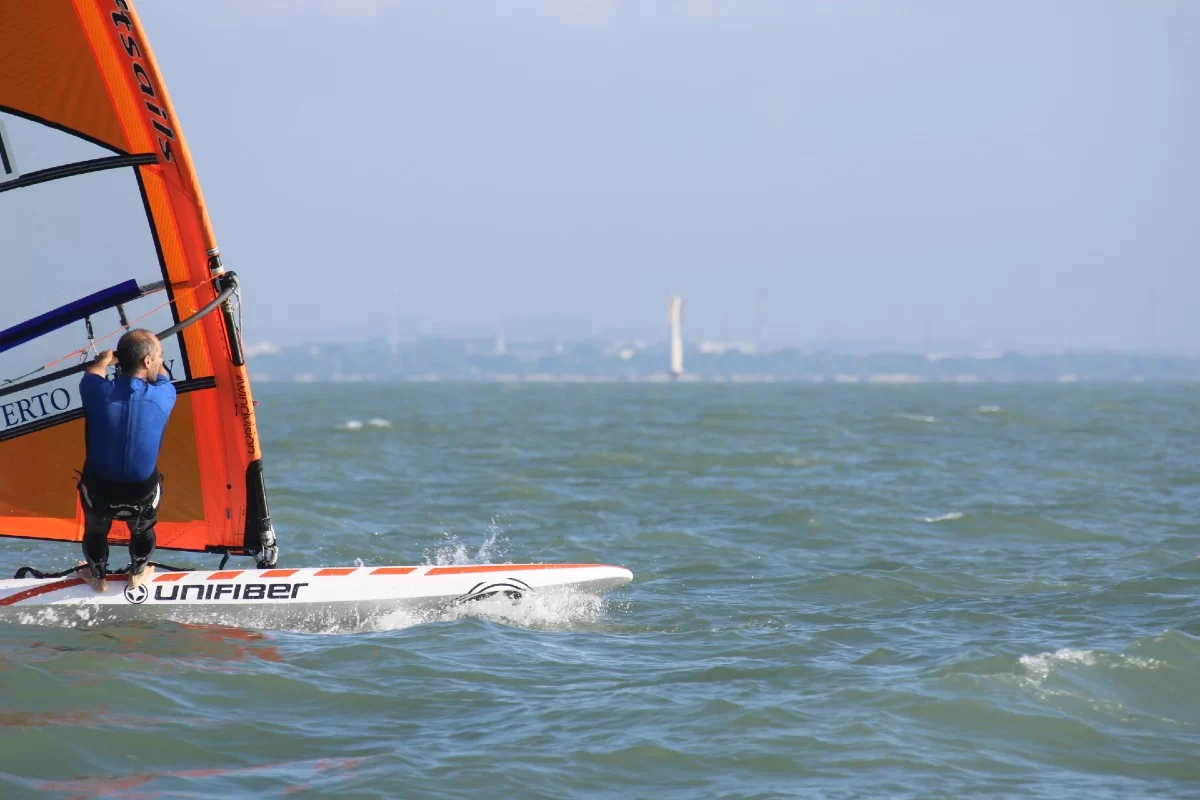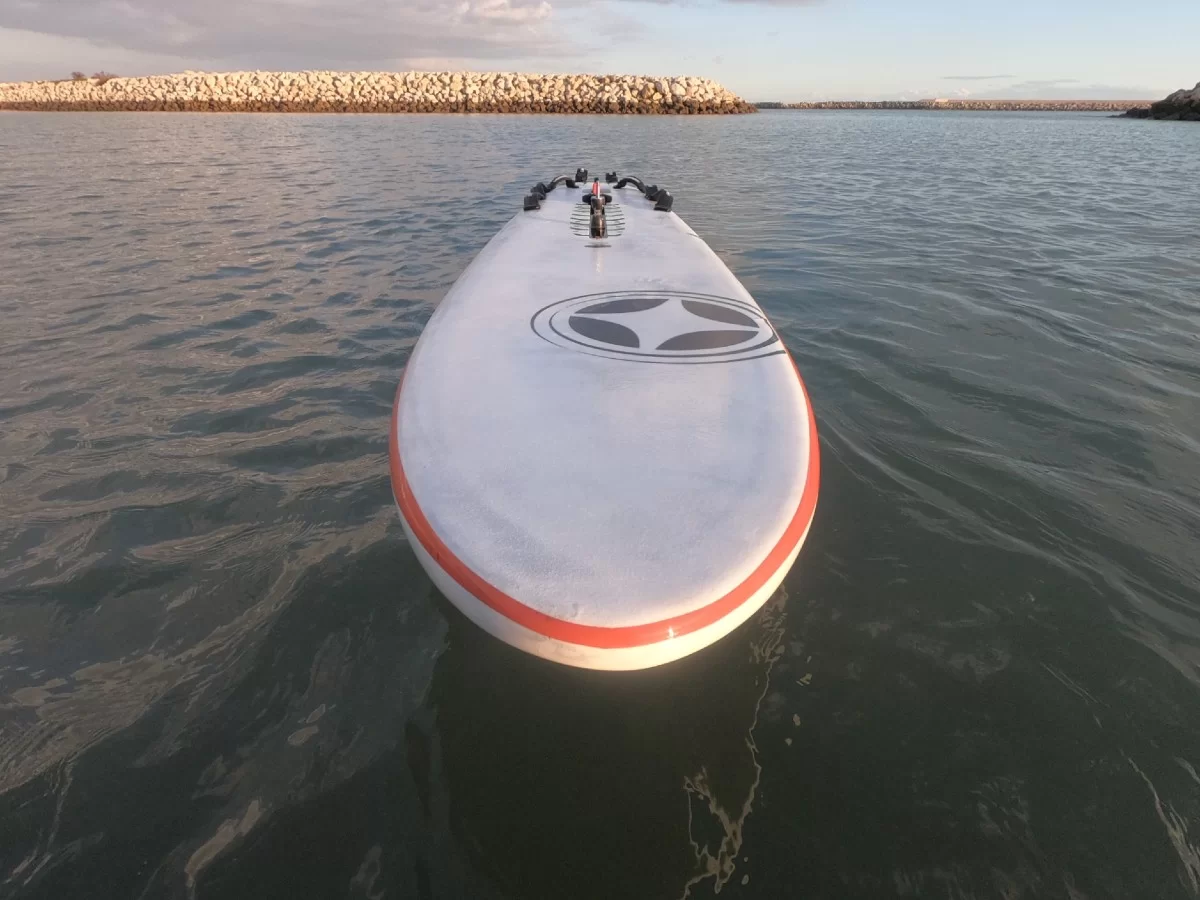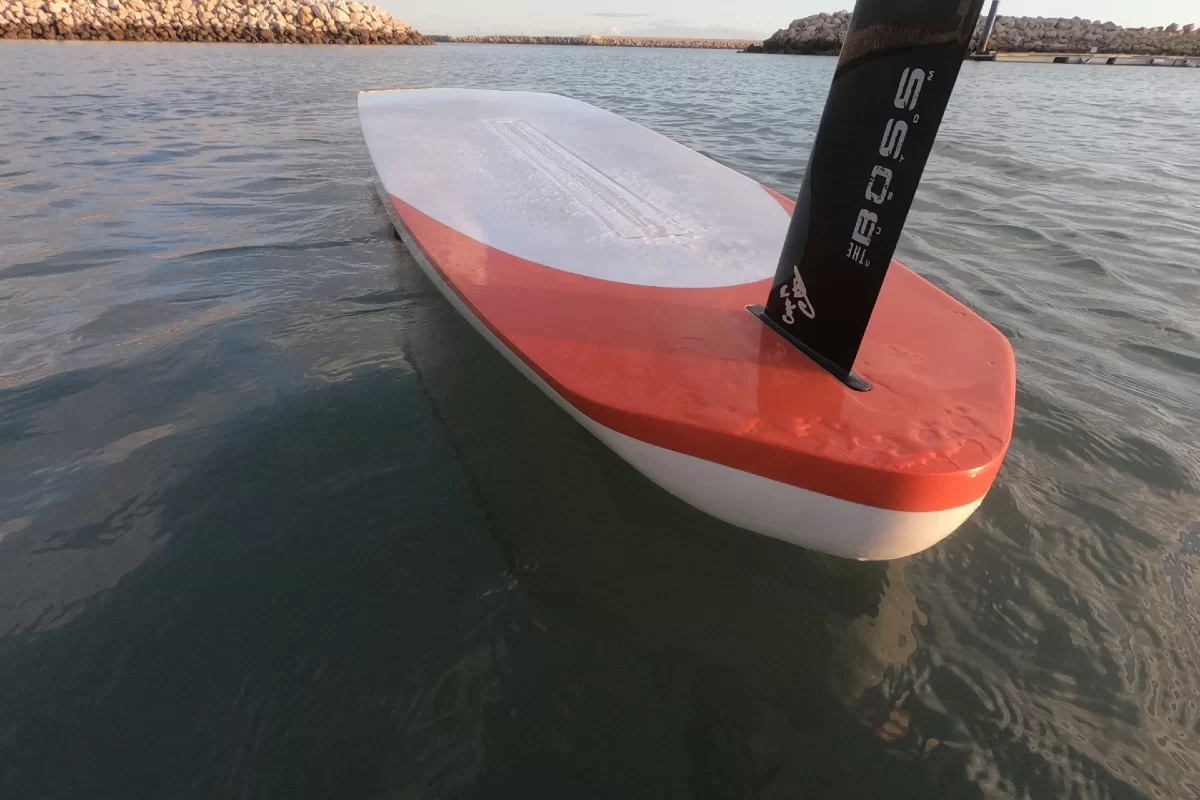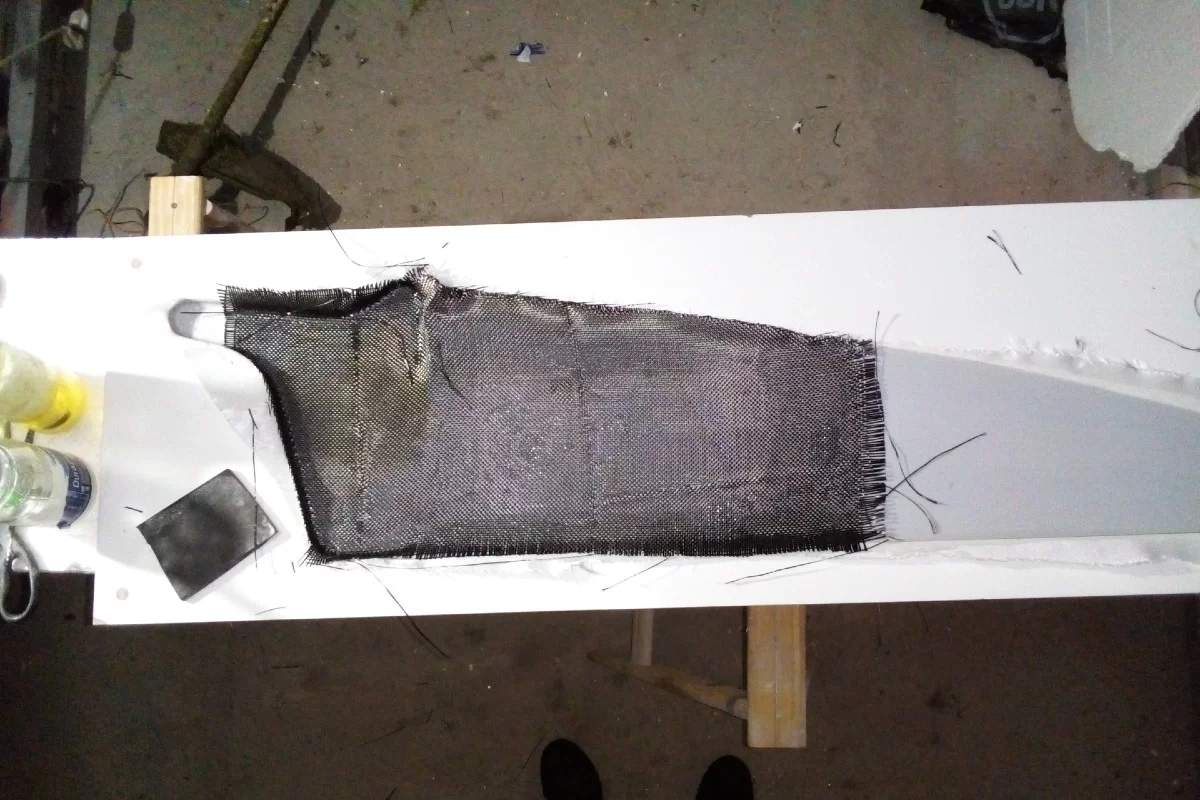Unifiber Proteus Raceboard Under The "Hood"
Q: By way of introduction, can you explain what make Raceboard Class different, when compared with other racing disciplines?
All windsurf racing classes require focus on technique, equipment and skills. But with raceboard, strategy and tactics are hugely significant too – more important than in disciplines such as wave, freestyle, and even slalom.
Raceboard class occupies a space between sailboats and windsurfing. It is the most strategic of windsurfing disciplines.

Marcos taking the prototype to a fun race
Q: What is the story behind Proteus?
The Proteus was in my mind. I knew the concept and improvements that were needed based on my previous Raceboard designs, but the board was still just an idea. Then one day the opportunity came - Curro Manchon phoned. He knew about my experience in this area; and explained that there was a certain windsurfing brand interested in a Raceboard project.
After the call, I immediately proceeded to work on the new board, turning the ideas into prototype design.
Q: What is new that Proteus brings to the discipline?
A fresh new choice. Before Proteus, riders had just two production raceboard options to choose from, and some of those riders were not happy with either of them. Some looked for custom solutions. Now they have an option that may suit them better.
LET'S GET TECHNICAL
Q: Proteus is more voluminous than its competitors. What good does that extra volume do?
Volume is very useful when sailing upwind in choppy water. Many previous and existing raceboards have a lot of volume, but in the wrong places, which creates an unbalanced and difficult-to-sail board. Those designs perform well in very specific conditions but lack versatility.
Volume distribution is the key.
Q: What are the key features of the Proteus deck, bottom and profile?
We need a board to perform in three navigational modes: displacement, semi-planing and planing. This, of course, in a wide range of wind and wave conditions. Proteus is designed with a very efficient hull to best meet the challenges of all scenarios.
When the wind is light, Proteus relies on its low drag hull with very smooth curves and balanced volume distribution.
In semi-planing conditions, it is easy to take advantage of the thick rails when going upwind - especially noticeable in choppy water. The flat bottom then gives maximum lift when going downwind.
In planing conditions, the board accelerates and reacts quickly helped by its 3° V-bottom.
The deck is clear and uncluttered. Riders can freely move around the whole board.

Deck showcases plenty of space for sailors to move about
Q: With no ‘batwings’, how would it plane as early as the Phantom and Elite?
Batwings claim to assist with early planing. How does the Proteus tackle this challenge?
‘Early planing’ is an intermediate mode between actual planing and water-displacement sailing. At these speeds, lift is not generated at the tail, but further forward towards the middle of the board.
Batwings help to stay on the plane when riders hit a wind lull, but as a trade-off, they create more drag when planing or in displacement mode.

Tail details of the pre-production design
Q: What tactical advantages does the Proteus daggerboard system provide?
Proteus features an exclusive daggerboard pivot system that allows adjustment of effective length and trim angle. Riders can set up their daggerboard according to weight, technique and wind conditions.
Volume distribution and daggerboard trim combined, allows Proteus to kill it in upwind performance.

Designing of a Proteus daggerboard
Q: Why choose the Unifiber Proteus raceboard?
Because it is the best. Proteus is a very fast, reliable, and easy raceboard. It suits more rider weights and works in a broader range of conditions than the competition.